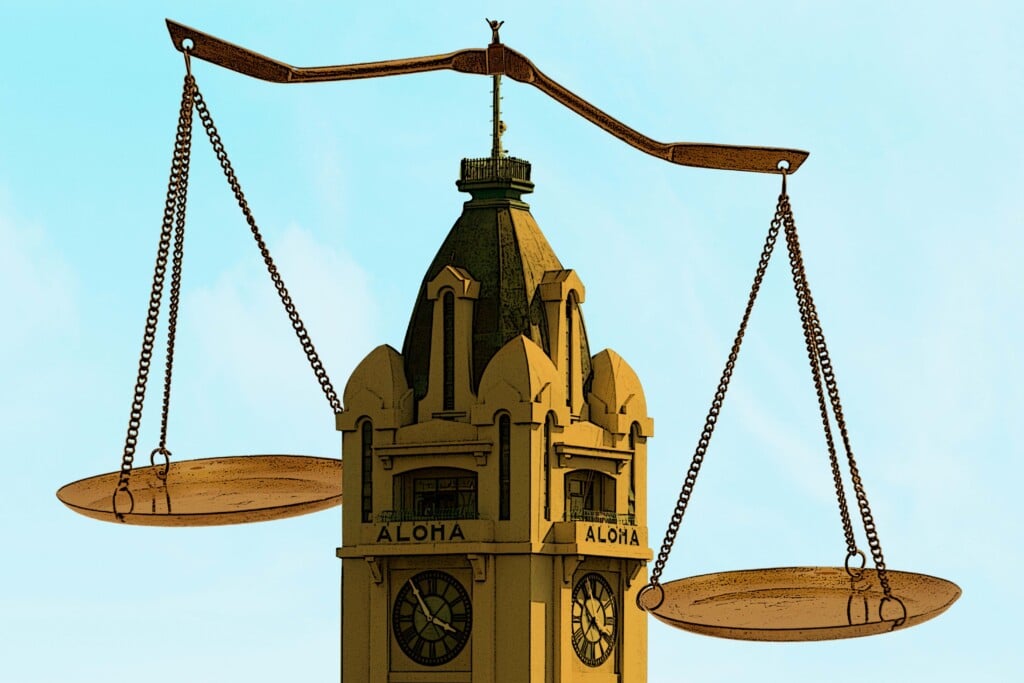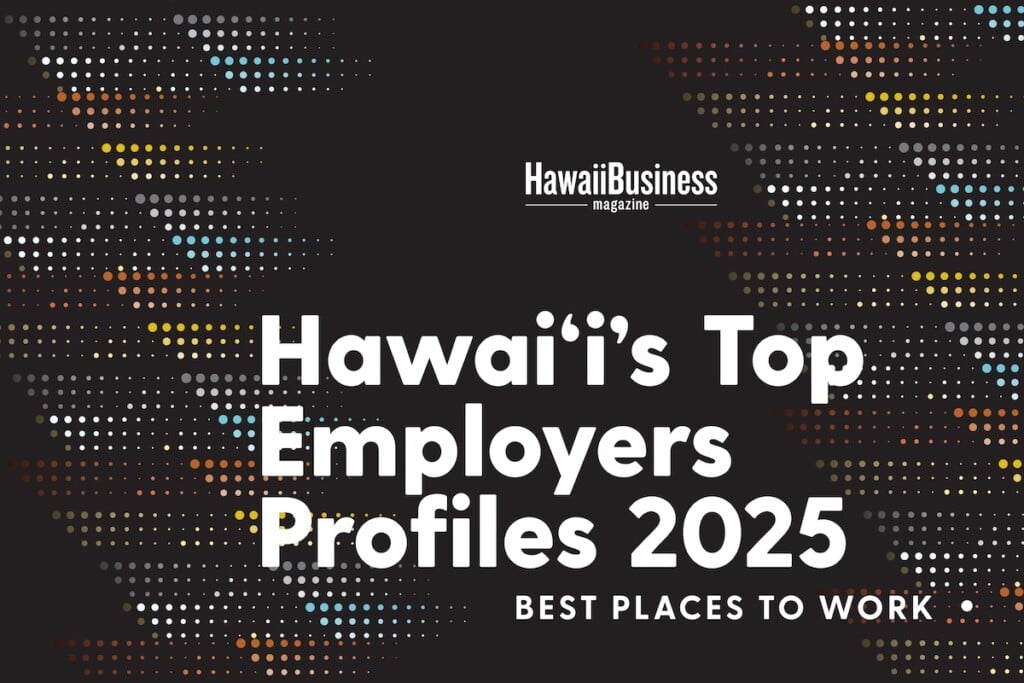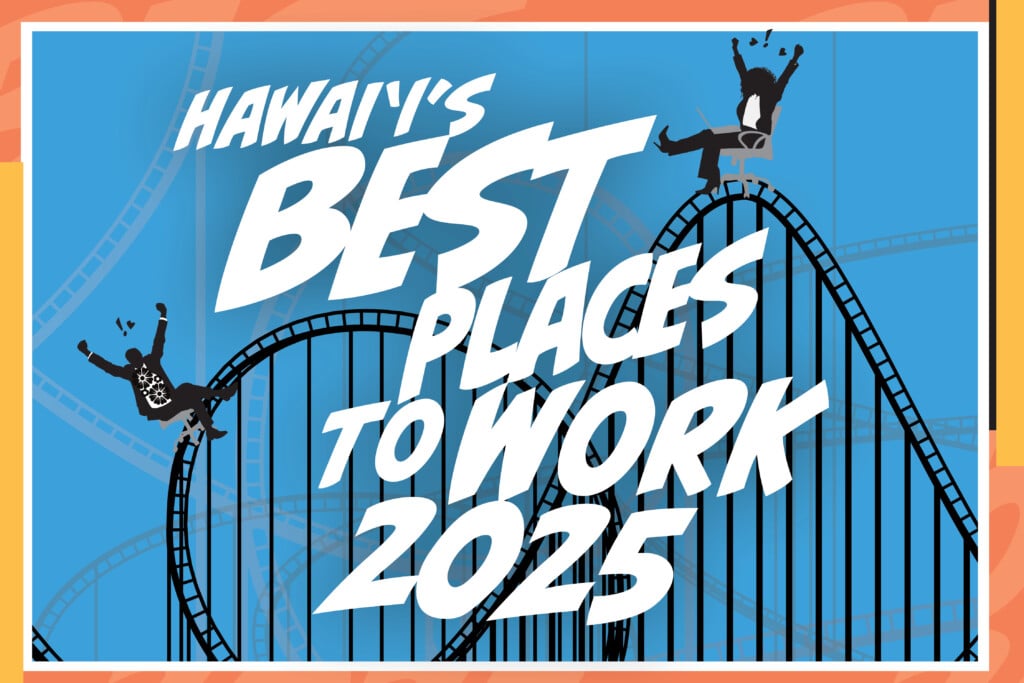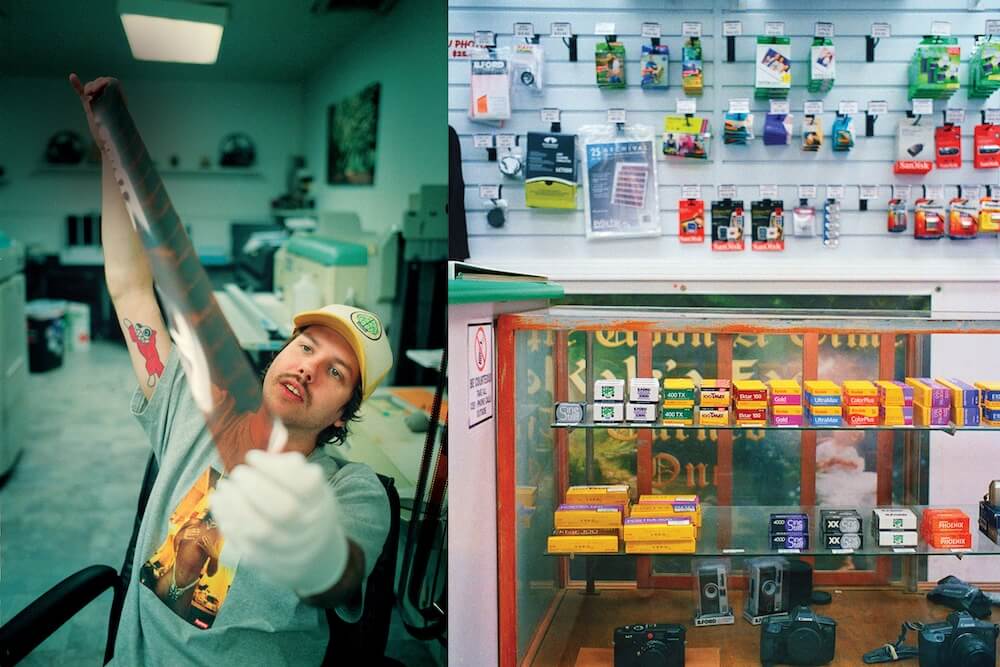Hawai‘i’s Legal World Evolves: A Roundtable Discussion
Senior attorneys from four top firms discuss new laws affecting their clients, workplace changes sought by younger lawyers and more.

The participants in this session were:
- Joel Kam, McCorriston Miller Mukai Mackinnon
- Christine Kubota, Damon Key Leong Kupchak Hastert
- Joseph Stewart, Kobayashi Sugita & Goda
- Craig Wagnild, Lung Rose Voss & Wagnild
- Moderator: Steve Petranik
Impact of New Laws and Regulations
Q: What are the biggest recent changes in local regulations and laws that affect you and your business clients?
Wagnild: One is the federal Corporate Transparency Act that went into effect at the beginning of this year. Congress explained that the law’s aim is to prevent money laundering and the financing of terrorism. Disclosures made pursuant to the Act are not made public. Almost all of our clients – we do a lot of real estate, business, and construction work – are acting through some entity, even if it’s a single member LLC. Most of these entities are required under the Corporate Transparency Act to disclose information to the federal government about their ownership and their beneficial ownership. In the past, you could set up a company and no one would know who owns it.
It’s not a difficult process, but a lot of people are not aware of the Corporate Transparency Act or its requirements. Companies that were formed before this year have until Dec. 31 to make that filing. For those entities formed this year, the owners have 90 days after they’re formed to submit a filing. And for those entities formed after this year, they must submit their filings within 30 days of formation. We are also gearing up to address noncompete clauses as they are becoming unenforceable in many cases.
We expect that is going to affect many of our clients’ agreements.
Kam: One continuing transformational effect in real estate – especially in the Ala Moana-to-Kapi‘olani corridor – is rail. Because of the area’s proximity to rail, regulations allow developers to realize higher FARs (floor area ratios) – build bigger and higher buildings with more floor area than was previously available. This continues to have a profound impact on what exists along the Ala Moana-to-Kapi‘olani corridor and what will be done in the future.
And when these projects are built, they’re required to add to the affordable housing inventory. We’ve helped clients acquire these affordable housing units and these units can be in areas previously unavailable to the clients. But now we are seeing kind of a weird dynamic: Some of these projects were developed and approved when interest rates were lower. The selling price of the affordable units are set by the government. And because of higher interest rates, it’s very difficult for individuals who meet the income qualifications to afford the affordable units at those prices. They’re too expensive now because interest rates have gone up. It’s unclear how it’s going to work out.
Q: Are people pausing their projects hoping that interest rates will go down?
Kam: There’s hesitation but we see optimism that interest rates are on the verge of dropping. And the development timeline in Honolulu is so long that there’s little benefit to pausing. Our clients have not gone full stop, although there are projects along Kapi‘olani Boulevard that appear to have gone full stop. I’m not sure what’s going on with those.
Q: Other changes in regulations and laws?
Kubota: I’ve noticed a massive delay in government responses. Permits have always been slow, but now IRS filings are so slow and getting an EIN number (employer identification number), for example for foreigners, takes so long it is difficult to open bank accounts. The IRS bigwigs tell us they’re so sorry but they are short of employees. Of course, a lot of employers have trouble finding people.
Stewart: From a litigation standpoint, I’m most interested to see the effects of the Chevron deference ruling from the U.S. Supreme Court. (In the past, courts generally deferred to government agencies that interpreted ambiguous laws; but the Supreme Court ruled that judicial deference to agency rulemaking was incompatible with the courts’ fundamental duty to interpret the law.) Will that ruling mean, for example, that developer clients will challenge regulations more? That’s still up in the air, but I’m really curious about that.
In another issue, Hawai‘i courts overall have redefined in a number of cases – not just environmental cases but overall – the concept of standing, meaning who can bring a lawsuit. It’s been broadened so now it doesn’t take a whole lot to be able to bring a lawsuit to try to stop a development or enforce an environmental regulation or whatever.
Something else: In litigation, our firm is more often on the defense side and they want quick resolutions if they feel unjustly sued. Our state courts have been historically hesitant about granting any kind of summary disposition, meaning to rule early; they tend instead toward saying, “Let the case go to trial.” What made judges even more hesitant about granting anything in the early stages of a case was the Hawai‘i Supreme Court’s decision in 2023 that partly overturned a trial court’s $800 million judgment in the Plavix case. (Plavix is a blood-thinning drug.)
So we’re seeing an even greater tendency for things to end up in alternative dispute resolution, because getting an early summary judgment is harder.
Q: So there’s a trend toward more mediation and arbitration?
Stewart: At this point, you almost have to assume mediation. The only time mediation might not make sense is if it’s a pure binary decision like a project gets developed or not. But in any commercial context where it’s two business parties – anything like that – mediation is almost inevitable, and the decision is simply: Do we set earlier or set it later? It’s a routine part of the litigation steps.
Kubota: Probate Court and Family Court are both very busy and take more time.
Kam: And Land Court has been slow for decades but is getting slower. It used to be we could process a subdivision through Land Court within about six months, and now it takes longer than a year for a simple subdivision. A few years ago, a lot of landowners who were interested in development were deregistering their property from the Land Court system. It used to be that you could do that in about six weeks, maybe two months. Now it’s taking longer. It’s turned into a big problem.
Stewart: From a litigation standpoint, the trial courts are getting back on track. Trials essentially shut down for 2020, and that pushed all the 2020 trials into 2021 and the 2021 trials into 2022. We’re still feeling the effects, but they’re getting back on track from a trial date standpoint. You can get an initial trial date, usually in 18 months, which is not atypical pre-pandemic. But to some extent that backlog has been pushed up to the appellate courts. I just had an Intermediate Court of Appeals decision that took seven years.
AI and New Technologies
Q: How are AI and other new technologies transforming the legal profession in Hawai’i?
Kubota: I don’t think lawyers will ever rely on it. It’s great to use as a base, but it’ll never replace human thinking. I see the associates using it a lot but I’m old school and never used it. I still use books.
Kam: “Transforming” suggests a foundational shift in the way lawyers practice and I don’t think we’re seeing that yet. Maybe one day, but definitely not yet. AI is being incorporated into the tools lawyers use to provide service like legal research.
AI can help lawyers perform research better, faster, more efficiently. I have noticed some clients trying to use AI to supplement legal services from licensed attorneys – and less informed clients sometimes think that AI can substitute for those services. We don’t think that’s a good idea.
I have reviewed things some of our clients have sent us that are generated by AI and for complex legal analysis, it’s not there. It’s not even close.
Maybe one day it’ll be sophisticated enough to provide reliable advice – I have my doubts – but we’re definitely years if not decades away from that.
Stewart: We use AI while reviewing documents – predictive coding, things that are evolutions of what we’d already been doing, like search terms. The technology improvements have made our practice much more efficient; this will continue to do that. It’s valuable because that ultimately results in cost savings to the clients.
However, when we’ve tested it for things like drafting substantive things, the quotes sometimes aren’t accurate. Some things are just flat-out made up. At this point, I wouldn’t put it even close to the level of summer law clerk, who I also wouldn’t rely on.
Sometimes clients think it might be a substitute for simple things like form documents, but what happens is that it works out fine when it works out. And when it doesn’t work out, you wish you’d spent a little bit of money to have a professional lawyer look at it the first time. All the time, people come to me and say, “I signed this thing and it says this, and I wish it said something else.”
Wagnild: AI is already built into the legal research platforms from Westlaw and Lexis. When starting research into a new area, it’s a tool that can be used effectively. The danger is relying on it, because there’s no discretion in what it pulls in and how it applies that information. It is also nondiscriminatory in weight of emphasis, jurisdiction and many other things attorneys consider as we decide how the law should be applied to a particular set of facts. AI is not equipped to do that and I don’t think it will for some time.
You also mentioned other technologies. The pandemic brought videoconferencing into the mainstream for all kinds of meetings, including court hearings. That’s a huge step forward in time and cost savings because attorneys from Honolulu previously had to fly to the Neighbor Islands for hearings.
But there are cons as well. I was a litigator in a former life and in my experience, a lot of the important stuff that comes from those hearings happens before and after the actual proceeding with the judge in court. It’s the discussions between attorneys – planning and agreeing and starting to work things out. That does not happen when you’re attending a hearing via videoconference.
Another technology is text messages. Some clients want to text you, and we really don’t have a way of capturing and retaining that dialogue. I tell clients: Don’t use text or social media as a means of communicating with me.
Challenges for Young Attorneys
Q: Has the move to remote work and communications hurt young attorneys’ development?
Kam: Remote work technology like Zoom and Microsoft Teams has made us more responsive and efficient. The flip side, which is not unique to the legal profession, is balancing that with the need for in-person contact. For junior lawyers in their first five years or so, the mentoring and in-person contact with senior lawyers are especially important to their development. It’s important to be able to walk down the hall and bounce ideas off someone. It’s helpful in learning how to analyze things in the right way. That’s difficult to do remotely.
So we brought everyone back to the office. There was resistance and we’re still experiencing residual effects of bringing everyone back. It’s an ongoing challenge and we’re constantly seeking the right balance.
Wagnild: We saw a huge impact on our junior attorneys during the beginning month or two of Covid and decided early on that we would bring people back as soon as we could. It was only after we had everyone back in the office that we learned other firms and businesses were having a hybrid conversation. While we generally want everyone in the office working together, if someone needs to be home, we accommodate that.
But for the most part, we want everybody back for the very reason Joel articulated: the importance of being able to talk face to face and that interaction. Videoconferencing isn’t the same. As senior attorneys, we can’t evaluate how associates are doing in the same way. We have an open-door policy in our office: Associates know they can just walk down the hall and stick their head in and talk to us. And there are lunchroom discussions. These kinds of things are, I believe, the key to the community we want to develop here – and frankly, I think, also to helping maintain the mental health of our employees.
Q: Christine, you work with a lot of foreign clients. Has your communication with them changed?
Kubota: Well, they don’t come here anymore because of the yen exchange rate (laughter) but I do talk to them a lot now over the phone. That part hasn’t really changed.
Our firm is like Joel’s and Craig’s: I want everybody in the office, though people can work from home two days a month. When I was an associate, I had lunch with somebody every day. We don’t do that anymore. It’s so important that we talk with each other and check in on each other. If I can see you, I can see stress. That’s so important.
A lot of the young people don’t know how to talk; they’ve texted all their lives, they even text to their parents. You have to teach them how to talk. You have to sense people’s emotions and you can’t do that unless you’re talking to them. Lawyering is a service, and you have to know the other person.
Q: We have a similar problem in the news business. On occasion, a source will insist on an email interview and nuance their answers so much that they’re less useful. That’s why I discourage email interviews; the necessary interaction between interviewer and interviewee is absent.
Stewart: That’s an exact issue in litigation. There’s a process called interrogatory when you can send written questions, and inevitably you get something back written by their lawyer that’s wordsmithed down to the precise thing. But you set a deposition with somebody and they’re right across the table, and you get their answers and ask follow-up questions. That’s where the real stuff comes up.
For those of us who already have client relationships formed, remote work doesn’t have as much of an impact, but it does on the next generation. Bert Kobayashi would drag me to meetings where I got to know the other younger person across the table, and we would form relationships. I think that is also lost in Zoom meetings, because you don’t get to know your contemporaries as much. You talk business on Zoom and then don’t really sit there and chat for 10 minutes, unless you already know that person.
In one example, I was talking to a client and after business was done, we were chatting, asking, “How are you doing?” and they said, “I’ve got all this work I have to process through Land Court. I wish I knew somebody who knew something about Land Court.” And I said, “I don’t know anything about Land Court. But I do have people in my office who do.” It ended up being a big chunk of business. That doesn’t happen unless you make time to chat.
The bottom line is that having a personal connection with your client makes it more likely that they’re going to advocate for you to other potential clients and advocate to use you again.
Q: From what I hear, every profession has that issue.
Stewart: It’s a generational thing. We didn’t have those means of communication when we were young. And I understand it’s easier to text somebody because you don’t have to deal with follow-up questions. I get the safety of it. But sometimes you have to put yourself out there. You have to risk somebody asking you a question that you don’t know the answer to right away. That’s part of the process. Trying to figure out how to train our next generation, to develop those skills, is a real priority we’re working on.
I’m saying to the associate, “Did you call that person?” and they’ll say, “I emailed them.” I’ll respond, “I know, but did you call them?” We’ve all had that conversation, I’m sure.
Attorneys’ Work-Life Balance
Q: Any other issues on your mind?
Kubota: A lot fewer people are going into private law firms, I think because they are looking for a different balance of life and work. We’re looking for lawyers all the time. So firms have to adjust. Maybe we need to hire part-timers or adjust this work environment.
Q: If they’re not going into private law practices, where do all the law school graduates go?
Kubota: To the banks, in-house at companies, to Google, Amazon, government.
Stewart: This latest generation of associates has done a much better job than we did of demanding their vacations and time off, which is probably healthier in the long run.
We’ve hired seven associates in the last 12 months, with the idea that they’re probably not all going to work as many hours as an associate might have worked 20 years ago, but they each can provide tremendous value. We focus on what is being done as opposed to what’s not being done. We’ve changed our requirements, like reduced the billable hours required by our associates. We also give them 50 hours of credit a year they can use toward their billable hours for things like professional development or mental health or things like that, and they’ve told us they appreciated that.
We pay for health club/gym memberships for our associates. We listened to our associates. And it’s been pretty good. We haven’t lost an associate to another firm in a while.
We needed to evolve and work with the next generation, because people are leaving the profession. And that’s shown in the HSBA stats. (Hawaii State Bar Association statistics for 2023 show 876 active attorneys in Hawai‘i age 60 to 69 and only 614 age 30 to 39.) It’s seriously reduced. And we’re not going to get a huge influx of mainland lawyers, because the salaries they’re getting paid are ridiculously high.
Wagnild: This is a very challenging time for private law practices in Hawai‘i. We see fewer law school graduates interested in pursuing traditional private practice as a career. Law firm practice has historically been defined by long hours, late nights, high stress, and an unforgiving and unsupportive workplace where associates compete for a limited number of partnership opportunities. For many of us, that was the world we had to navigate.
But much has changed as all of our firms try to better address the needs of young attorneys and attract them to private practice. Hawai‘i needs good attorneys – attorneys who are critical thinkers, who have strong interpersonal communication skills, who can unravel and understand complex issues and problems, and who can help people come together and resolve disputes. Good attorneys are problem solvers, and the key to solving problems is communication. This is a profession and a calling that I am proud to be a part of, and those of us practicing in law firms here in Hawai‘i want to see a bright future for the next generation of lawyers.










